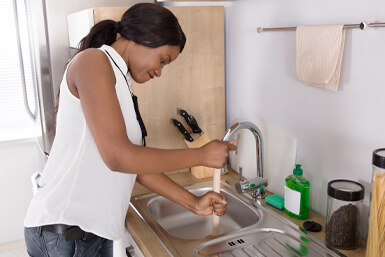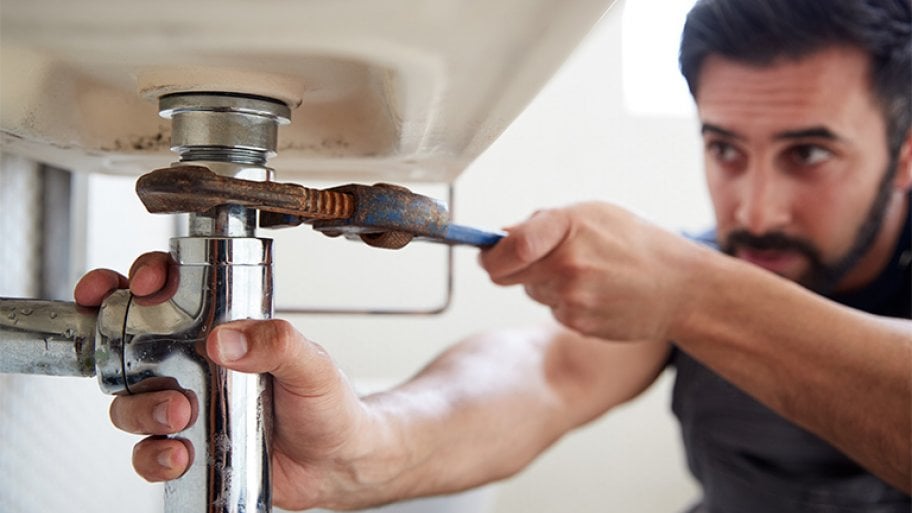Finding and Fixing the Causes of Unwanted Plumbing Noises in Your Home
Finding and Fixing the Causes of Unwanted Plumbing Noises in Your Home
Blog Article
Just how do you feel with regards to Why Your Water Pipes Are Noisy and How To Shut Them Up?

To identify loud plumbing, it is essential to establish very first whether the unwanted audios happen on the system's inlet side-in various other words, when water is turned on-or on the drainpipe side. Noises on the inlet side have actually differed causes: too much water stress, worn valve and faucet parts, improperly connected pumps or various other home appliances, inaccurately put pipeline bolts, and also plumbing runs containing a lot of tight bends or various other constraints. Noises on the drainpipe side generally originate from poor area or, just like some inlet side noise, a design including limited bends.
Hissing
Hissing sound that occurs when a tap is opened slightly usually signals extreme water pressure. Consult your regional water company if you think this trouble; it will have the ability to tell you the water stress in your area as well as can mount a pressurereducing valve on the incoming water supply pipe if needed.
Thudding
Thudding sound, commonly accompanied by shivering pipes, when a faucet or home appliance shutoff is switched off is a problem called water hammer. The noise as well as vibration are triggered by the reverberating wave of stress in the water, which suddenly has no area to go. Occasionally opening a shutoff that discharges water swiftly right into an area of piping consisting of a restriction, joint, or tee fitting can produce the exact same problem.
Water hammer can normally be healed by setting up installations called air chambers or shock absorbers in the plumbing to which the issue valves or taps are linked. These devices allow the shock wave developed by the halted flow of water to dissipate in the air they consist of, which (unlike water) is compressible.
Older plumbing systems may have brief vertical areas of capped pipe behind wall surfaces on faucet competes the exact same objective; these can ultimately loaded with water, minimizing or damaging their efficiency. The treatment is to drain the water supply entirely by turning off the major supply of water shutoff and also opening all taps. Then open the major supply shutoff and close the taps one by one, beginning with the faucet nearest the valve and also ending with the one farthest away.
Chattering or Shrieking
Extreme chattering or shrieking that happens when a valve or faucet is activated, which typically disappears when the fitting is opened fully, signals loose or defective internal components. The solution is to replace the valve or tap with a brand-new one.
Pumps as well as home appliances such as cleaning devices and dishwashing machines can transfer electric motor noise to pipelines if they are poorly linked. Link such items to plumbing with plastic or rubber hoses-never stiff pipe-to isolate them.
Other Inlet Side Noises
Creaking, squeaking, scraping, breaking, as well as tapping normally are caused by the growth or tightening of pipes, normally copper ones providing warm water. The noises take place as the pipes slide versus loose fasteners or strike neighboring home framework. You can commonly identify the area of the problem if the pipelines are revealed; just comply with the noise when the pipes are making sounds. Probably you will certainly uncover a loose pipe wall mount or a location where pipes lie so near floor joists or various other mounting pieces that they clatter versus them. Attaching foam pipeline insulation around the pipelines at the point of contact need to remedy the problem. Be sure bands and wall mounts are secure and also provide adequate support. Where possible, pipe bolts need to be affixed to massive structural elements such as structure wall surfaces as opposed to to mounting; doing so decreases the transmission of resonances from plumbing to surfaces that can enhance as well as transfer them. If attaching bolts to framework is inevitable, cover pipes with insulation or various other durable product where they get in touch with fasteners, and also sandwich completions of new bolts in between rubber washers when installing them.
Remedying plumbing runs that struggle with flow-restricting limited or many bends is a last hope that should be taken on only after consulting a competent plumbing specialist. Regrettably, this circumstance is relatively common in older homes that may not have been constructed with interior plumbing or that have seen several remodels, especially by amateurs.
Drain Noise
On the drain side of plumbing, the chief goals are to eliminate surfaces that can be struck by dropping or hurrying water and also to shield pipes to contain unavoidable audios.
In brand-new construction, bath tubs, shower stalls, toilets, and wallmounted sinks and basins ought to be set on or versus durable underlayments to minimize the transmission of noise through them. Water-saving commodes as well as faucets are less noisy than traditional designs; install them as opposed to older types even if codes in your location still allow using older fixtures.
Drains that do not run vertically to the cellar or that branch right into straight pipe runs supported at floor joists or various other framing present specifically bothersome sound problems. Such pipes are big sufficient to emit considerable vibration; they also bring considerable amounts of water, which makes the situation worse. In brand-new construction, define cast-iron dirt pipelines (the big pipes that drain pipes bathrooms) if you can afford them. Their massiveness contains a lot of the noise made by water passing through them. Also, stay clear of directing drains in wall surfaces shared with rooms and spaces where people gather. Walls consisting of drainpipes need to be soundproofed as was described previously, making use of double panels of sound-insulating fiberboard and also wallboard. Pipes themselves can be wrapped with special fiberglass insulation made for the function; such pipelines have a resistant vinyl skin (often having lead). Results are not constantly sufficient.
WHY IS MY PLUMBING MAKING SO MUCH NOISE?
This noise indeed sounds like someone is banging a hammer against your pipes! It happens when a faucet is opened, allowed to run for a bit, then quickly shut — causing the rushing water to slam against the shut-off valve.
To remedy this, you’ll need to check and refill your air chamber. Air chambers are filled with — you guessed it — air and help absorb the shock of moving water (that comes to a sudden stop). Over time, these chambers can fill with water, making them less effective.
You’ll want to turn off your home’s water supply, then open ALL faucets (from the bathroom sink to outdoor hose bib) to drain your pipes. Then, turn the water back on and hopefully the noise stops! If you’re still hearing the sound, give us a call to examine further.
Whistles
Whistling sounds can be frustrating, as sometimes the source isn’t easily identified. However, if you can pinpoint which faucet or valve that may be the cause, you’ll likely encounter a worn gasket or washer — an easy fix if you replace the worn parts!Whistling sounds from elsewhere can mean a number of things — from high water pressure to mineral deposits. Your best plan of attack here is to give our plumbing experts a call. We’ll be able to determine where the noise is coming from and what the cause may be, then recommend an effective fix!
Cracks or Ticks
Cracking or ticking typically comes from hot water going through cold, copper pipes. This causes the copper to expand resulting in a cracking or ticking sound. Once the pipes stop expanding, the noise should stop as well.
Pro tip: you may want to lower the temperature of your water heater to see if that helps lessen the sound, or wrapping the pipe in insulation can also help muffle the noise.
Bangs
Bangs typically come from water pressure that’s too high. To test for high water pressure, get a pressure gauge and attach it to your faucet. Water pressure should be no higher than 80 psi (pounds per square inch) and also no lower than 40 psi. If you find a number greater than 80 psi, then you’ve found your problem!
Next step is to give us a call in order to install a pressure regulator. Trust us, you don’t want to wait to resolve this issue. Not only is the sound annoying, but high water pressure can be destructive to your home — including damaging certain appliances, like your washer and dishwasher.
Dripping
You might be accustom to the slow quiet drip your kitchen faucet makes. You might have even tuned out your bathroom sink dripping and drabbing all day long — but it’s time to find its cause.
A slow drip could signify a variety of easy to fix issues, such as a worn out O ring, or loose part. And by ignoring the drip, you could be wasting up to 2,000 gallons of water a year! So start conserving water — get it looked at ASAP.
https://www.pwessig.com/blog/2018/december/why-is-my-plumbing-making-so-much-noise-/

I am very excited about Why Your Water Pipes Are Noisy and How To Shut Them Up and I really hope you enjoyed the entire blog entry. Sharing is caring. You just don't know, you will be doing someone a favor. Thanks so much for your time spent reading it.
Ring for results! Report this page